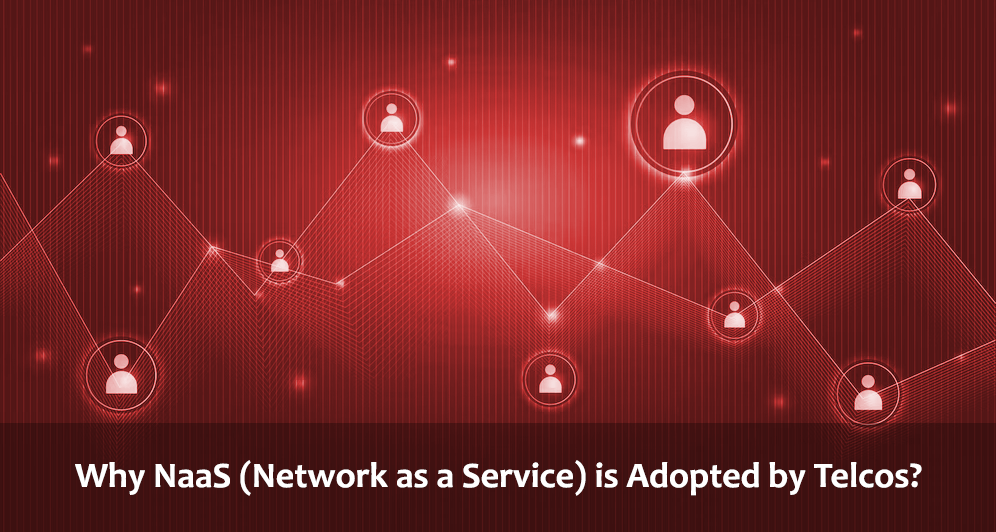Why NaaS (Network as a Service) is Adopted by Telcos?
08 August 2023
Abstract:
The purpose of this case study is to explore the motives behind the increasing adoption of Network as a Service or NaaS by telecommunication companies shortly called Telcos. By evaluating the challenges that telecommunication industry face, the advantages of NaaS and real-world examples of successful implementation, this case study focuses on the key factors that drive the adoption of NaaS in the Telecom industry.
Introduction:
The telecommunication industry is undergoing a considerable transformation because of the increasing demands for cost-efficiency, agility and connectivity. Companies in the telecommunication industry continuously seek innovative solutions. The purpose is to address these challenges and offer improved service to customers. Thanks to Network as a Service. It has emerged as a promising model. It offers telecommunication companies a scalable and flexible network infrastructure. In turn, these companies are able to meet the increasing demands of their customers efficiently. The table below gives an overview of the challenges faced by Telecom Companies and how NaaS addresses their challenges. Also, readers can get a general overview of the outcomes here:
| Challenges | NaaS Solution | Outcomes |
|---|---|---|
| Network Complexity | Flexibility and Agility | Improved customer satisfaction |
| Scalability | Service Innovation | Improved operational efficiency |
| Cost Optimization Challenges | Cost Optimization | Cost Savings |
Challenges Faced by Telecommunication Companies:
No one can deny the fact that telecom companies these days are functioning in a competitive landscape. So, they face different challenges like those detailed below:
Network Complexity:
Even today, many telecom companies follow traditional network infrastructure. This infrastructure is not only hard to manage but is also complex. It leads to slower service provisioning and higher operational costs.
Scalability:
Scalability is yet another challenge that instills fear in the minds of representatives of telecom businesses. They face an ever-increasing demand for connectivity and bandwidth. So, they should rapidly scale their networks to meet the requirements of customers. Nevertheless, traditional network architectures often face inadequacy in the flexibility required for efficient scaling.
Cost Efficiency:
Telecommunication companies always face hardships with optimizing costs. They are forced to handle these challenges besides delivering high-performance and dependable network services. Most companies operating in this industry feel that the Capital Expenditure or CapEx connected with developing and maintaining network infrastructure can be considerable. In turn, most companies face financial burdens.
Why Telecom Companies Adopt NaaS?

Most telecom companies these days are moving towards NaaS or Network as a Service. NaaS is nothing but a cloud-based service model. It helps telecommunication companies not only virtualize but also deliver network resources. Above all, they can deliver resources only on-demand to customers. By leveraging software-defined networking (SDN) and virtualization technologies, NaaS provides the following benefits, thereby motivating telecom companies to adopt it:
Flexibility and Agility:
By adopting NaaS, telecommunication companies can swiftly scale and provision network resources based on demands from customers. In turn, they can get rid of the need for time-consuming and manual configuration changes.
Cost Optimization:
Telcos can bring down CapEx by moving from hardware-centric to virtualized infrastructure in NaaS. They can do this by leveraging dynamic allocation and shared resources.
Service Innovation:
After adopting NaaS, telecom companies will be able to offer innovative services to their enterprise customers. These companies can introduce network slicing. In turn, companies can have dedicated virtual networks customized to their particular needs. Furthermore, some telecom companies deploy SD-WAN Solutions, thereby providing improved network management capabilities and connectivity.
Outcomes of NaaS Adoption:
Let us take the case of Company X which adopted NaaS. This company benefited a lot from NaaS Adoption:
Improved Operational Efficiency:
Company X found that the complexity of network management reduced considerably after it adopted NaaS. After this adoption, Company X was able to streamline its operations. Also, it achieved an improvement in the service delivery times considerably.
Cost Savings:
With the help of NaaS, Company X was able to optimize its network infrastructure. It was able to benefit a lot from shared resources. In turn, the company achieved considerable cost savings. As a result, the profit of this company increased by a decent percentage after NaaS adoption.
Improved Customer Satisfaction:
The success of any telco relies on how satisfied its customers feel. This happened to Company X after NaaS Adoption. The reason is that after this adoption, Company X could introduce innovative services. Examples include SD-WAN and network slicing. After NaaS Adoption, Company X was able to cater to the diverse needs of customers at a faster and better pace. In turn, the company achieved not only customer satisfaction but also customer loyalty.
Conclusion:
The implementation of Network as a Service can poses challenges to Managed Service Providers and telecom companies. This is because of the complexity of transitioning to a virtualized infrastructure.
Fortunately, companies like Ultraconnect can play a crucial role in enabling MSPs and Telcos to embrace Naas efficiently. Ultraconnect offers comprehensive strategies and services particularly designed for facilitating NaaS adoption. The software-defined network capabilities of Ultraconnect combined with robust infrastructure can empower telecommunication companies and MSPs to scale, manage, and provision network resources seamlessly.
By leveraging Ultraconnect, MSPs and telcos can overcome the hindrances connected with NaaS implementation. The intuitive interface offered by Ultraconnect makes network management easy. Also, Telcos and MSPs can improve service delivery and reduce operational complexities with the help of Ultraconnect.